When I find my favorite summer salad on the menu, I have no choice but to indulge. The combination of roasted deep red beets, goat cheese, and mixed greens with a balsamic dressing is just delicious. With a patch of soil or even a large container, one does not need to visit their local café to have this easy-to-prepare dish.
Beets, or beetroot (Beta vulgaris) as they are known in Europe, are a cool-season root vegetable packed with essential nutrients, fiber, vitamins B9 and C, manganese, potassium, and iron. Consisting of 87% water, they are less than 60 calories per cup. Delicious eaten raw, they are most often cooked or pickled. The tender greens are also a tasty addition to your evening’s salad. If you’ve been a beet-hater since their earthy taste hit your palate during childhood, it’s time to try these nutrient-dense veggies again.
Starting beets from seed
Numerous beet varieties are in catalogs, with color being their most distinguishing characteristic. While most are round, some are cylindrical or shaped like turnips. You will find red to be the most common color, with yellow, white, pink, and purple varieties also available. Tolerant of the cold, they thrive in both spring and fall, being able to survive frosts and near-freezing temperatures.
Best grown by direct-seeding in their beds, they do not like to be transplanted. Rows should be 12 to 18 inches apart and seeds planted 1 to 2 inches apart. If you are short on space, plant them in 2- to 3-foot squares, and keep the spacing even to maximize your production. Sow at least two seeds per space, as germination can be low, but don’t go overboard. Each wrinkly beet “seed” is actually a cluster with two to four seeds inside. Once your plants reach a height of 4 to 5 inches, thin the plants to 3 to 4 inches apart. Pinch or cut off the excess seedlings, leaving it to form a single beet root. Do not disturb the soil by pulling the plants.
Which beets are the best? My first attempt was with a prepackaged mix of red, gold, striped, round, and cylindrical varieties, and they were all wonderful. These are some good ones for you to try.
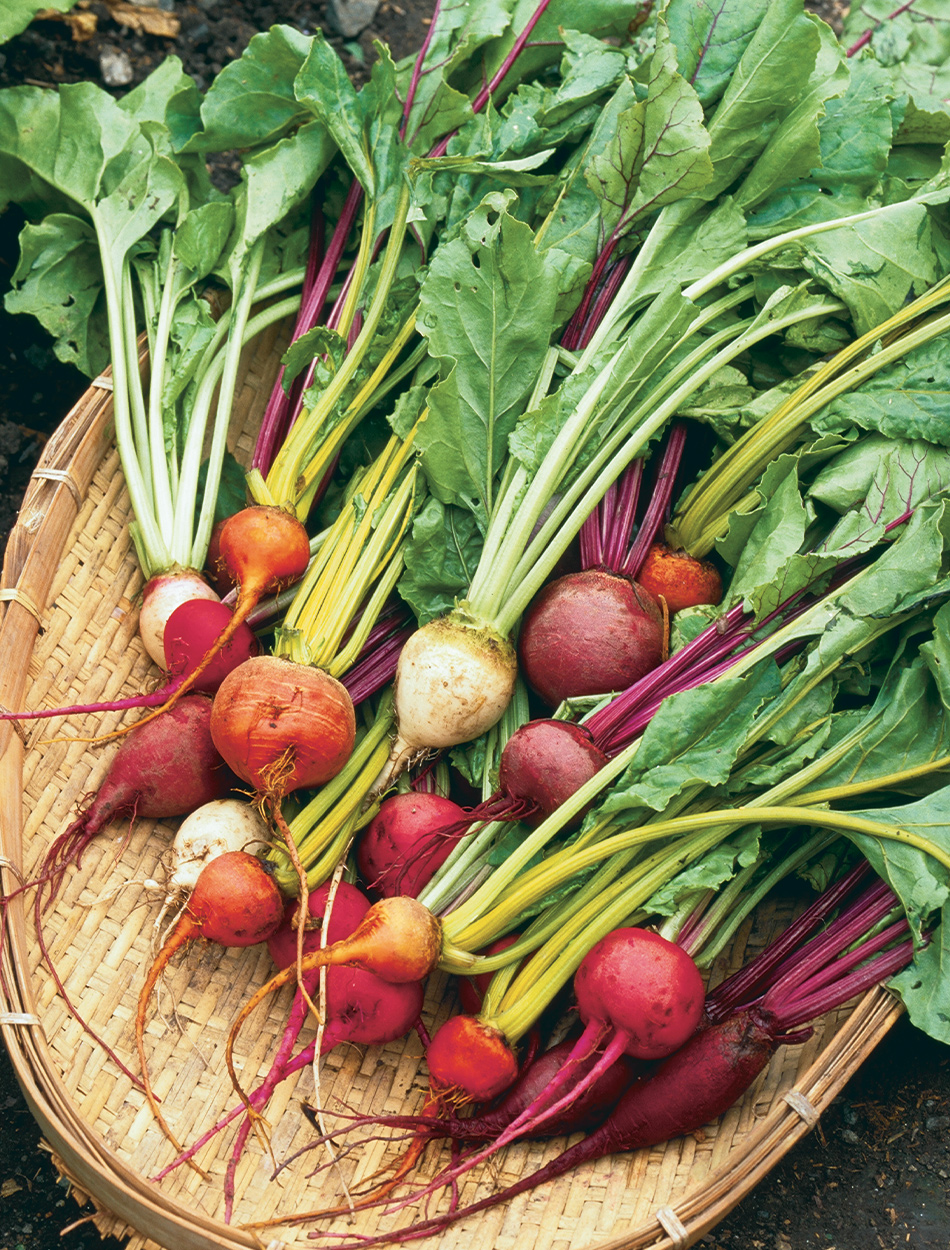
The best beet varieties
Red beets
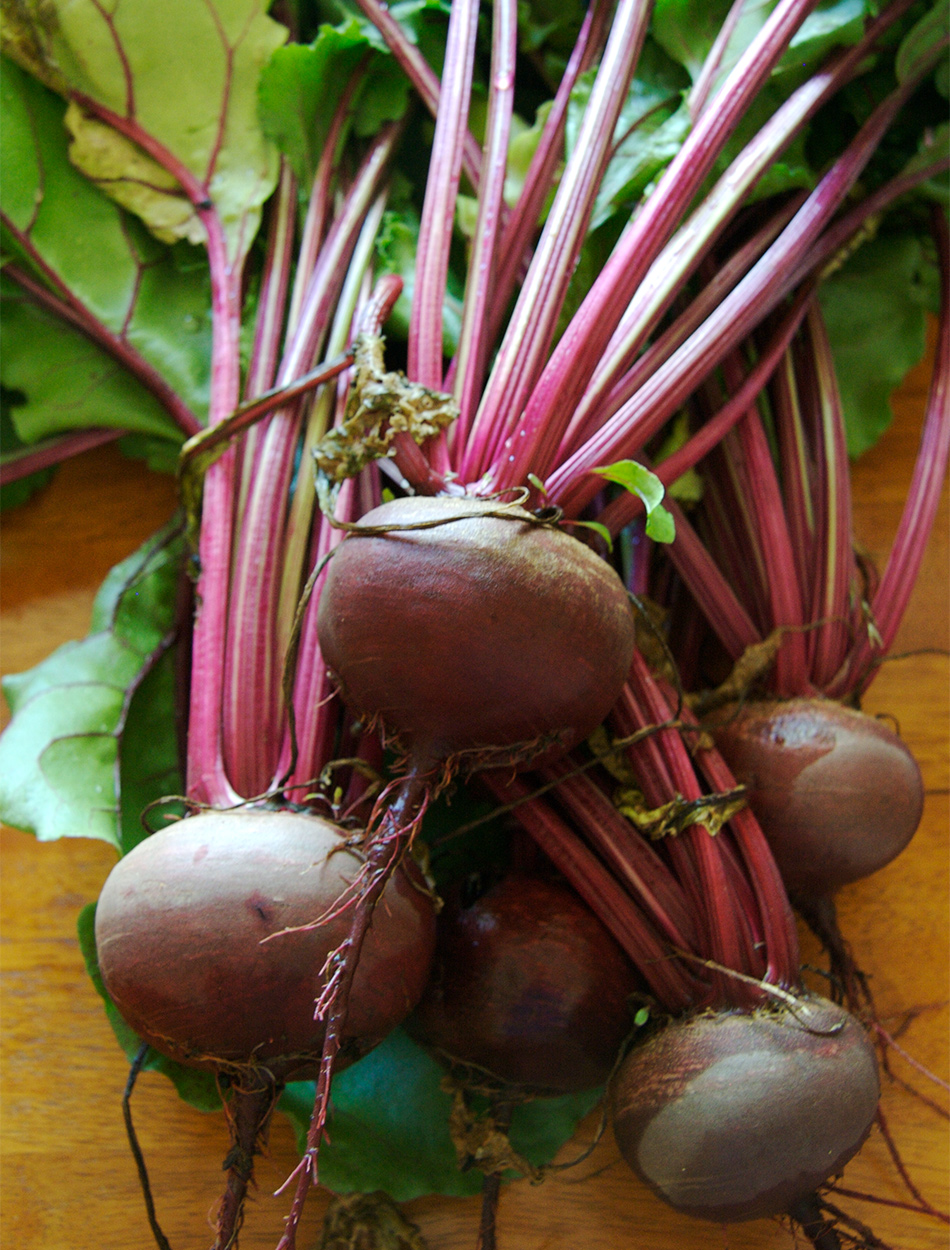
Globe shaped with a solid, deep red flesh, red beets are full of rich flavor. Detroit Dark Red has red-tinged tops and is recommended for sowing late in the season for winter storage.
When looking for a multipurpose beet, Bull’s Blood will do all you ask. Frost hardy, it’s ideal temperature for growing is 50 to 85°F, and it matures in only 50 days. This beet is considered a gourmet addition to salads when picked in the baby stage, and the greens can also be selectively harvested for a burst of color. An heirloom variety, one of its parents is the ancient Crapaudine beet.
Boltardy is one of the most popular and best-known beets in the United States and United Kingdom. Boasting a sweet flavor and a tender, solid, dark red flesh, it’s a great option for roasting, pickling, and eating raw in salads. For a steady supply of these all season long, plant seeds every two weeks, from March to mid-July.
Learn More:
When to Harvest Vegetables
Lesser-Known Root Vegetables
Beets: The Double-Duty Vegetable

Chefs favor ingredients that offer uniformity and ease of preparation. The heirloom beet Cylindra fits that need perfectly. With roots 5 to 6 inches long and 1 to 2 inches wide when mature, they are easy to process, with a fine texture and sweet taste.
The oldest beet variety still in use is Crapaudine. Beloved in French markets and kitchens, it is typically roasted over a charcoal fire, allowing its thick skin to slip off. It has one of the deepest, earthiest, and most savory flavors of any beet. It keeps well over the winter in cool storage with no loss of taste but is so exceedingly difficult to grow. If you are up for a challenge, this is one to try.
Yellow beets
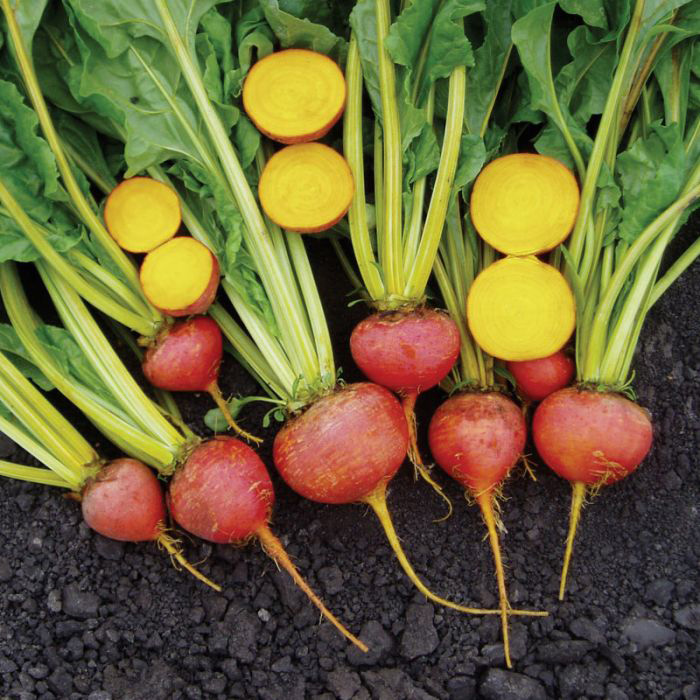
Golden beets are a bit sweeter than the red varieties and non-staining when you prepare them. With bright green tops, Touchstone Gold has consistently round roots, smooth skin with a bright orange exterior, and golden flesh. When cooked, the gold color is retained.
For good yield and flavor, the heirloom cultivar Golden Detroit has a smooth orange skin and gold interior. A variation of Detroit Red, it is milder and sweeter than its red relative.
Pink beets
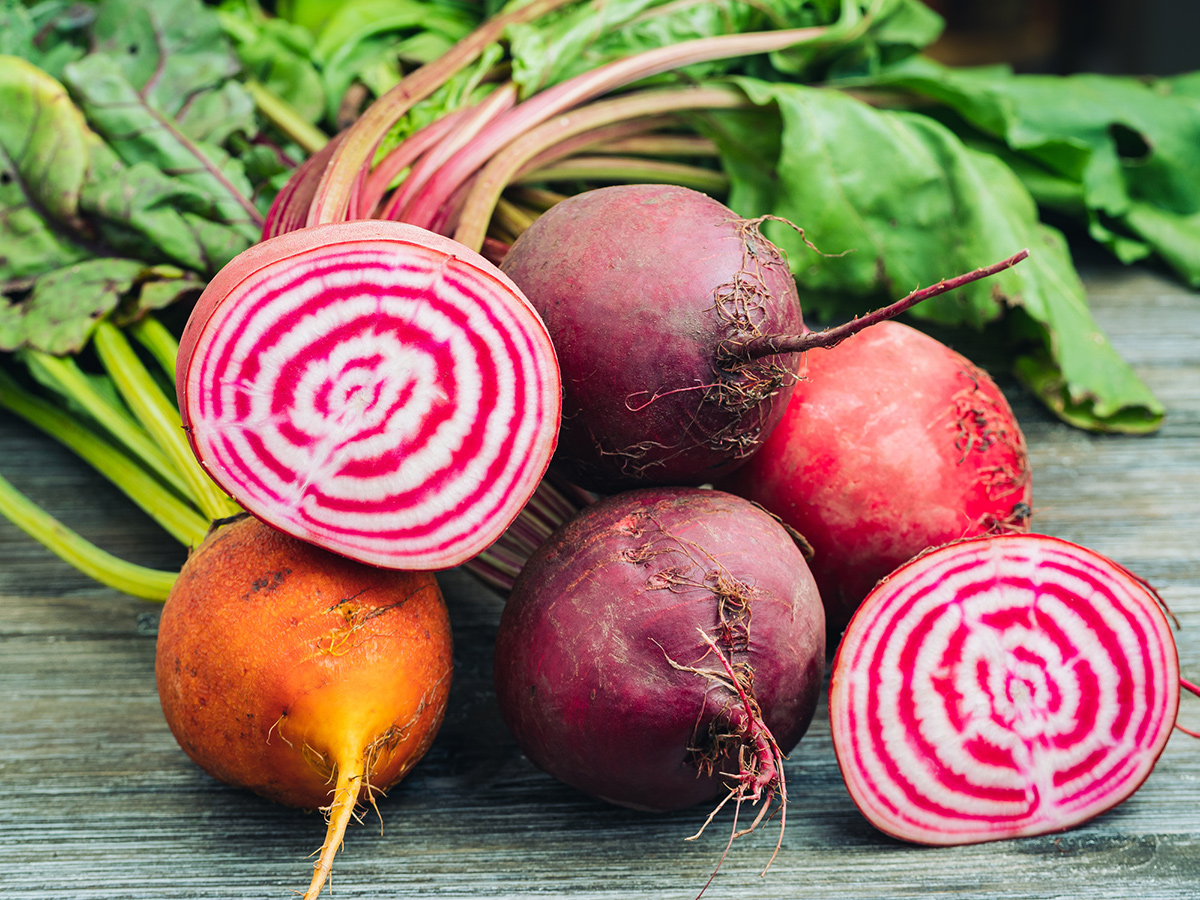
An Italian beet with candy cane rings of flesh, Chioggia is yet another heirloom variety that adds visual interest to any dish. Sweet and mild, the colors fade to pink when cooked. When sliced paper thin, they are beautiful on a salad and delicious as a snack.
It’s difficult to pick just one or even a couple of varieties. That’s why we need farmer’s markets—to fill the gaps our garden doesn’t provide. Whichever one you try, you won’t be disappointed. No room in the garden? A large container will give you enough space to get started. If you find a winner I haven’t mentioned, let us know.
Find more information on beets and other root vegetables:
Discuss this article or ask gardening questions with a regional gardening expert on the Gardening Answers forum.
And for more Midwest regional reports, click here.
Marti Neely, FAPLD, owns and operates Marti Neely Design and Associates in Omaha, Nebraska.
Fine Gardening Recommended Products
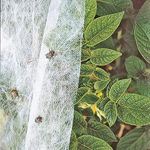
Gardener’s Supply Company Summerweight Fabric Plant Cover
Fine Gardening receives a commission for items purchased through links on this site, including Amazon Associates and other affiliate advertising programs.
Ideal for summertime pest control, this garden cover effectively screens out Japanese beetles, potato beetles, cabbage worms, leaf miners, carrot flies and most vine borers. It transmits 97.6% of the light to your plants without allowing heat build-up, and it provides cold protection down to 41° F, to extend your growing season.
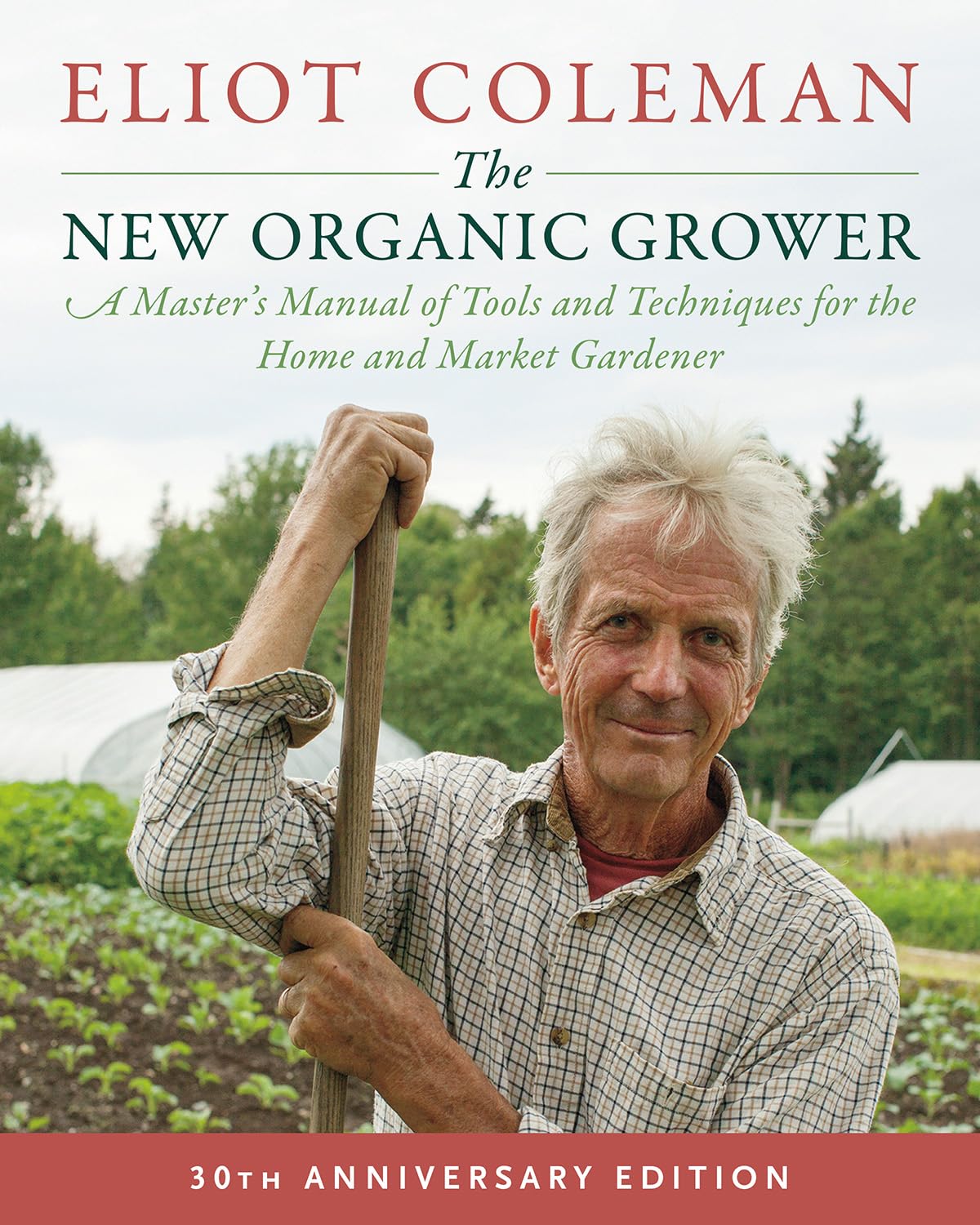
The New Organic Grower, 3rd Edition: A Master’s Manual of Tools and Techniques for the Home and Market Gardener, 30th Anniversary Edition
Fine Gardening receives a commission for items purchased through links on this site, including Amazon Associates and other affiliate advertising programs.
Since its original publication in 1989, The New Organic Grower has been one of the most important farming books available, with pioneer Eliot Coleman leading the charge in the organic movement in the United States. Now fully illustrated and updated, this 30th Anniversary Edition is a must-have for any agricultural library.
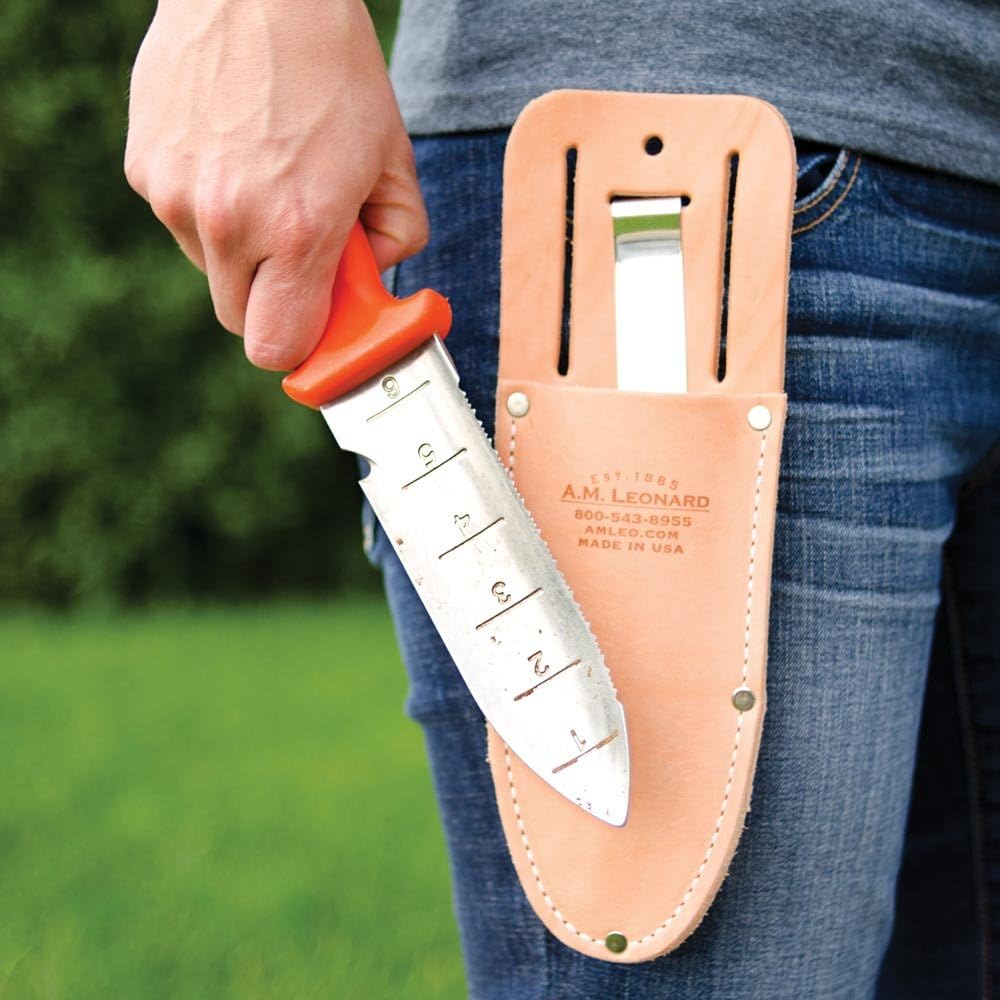
A.M. Leonard Deluxe Soil Knife & Leather Sheath Combo
Fine Gardening receives a commission for items purchased through links on this site, including Amazon Associates and other affiliate advertising programs.
MULTITASKING DUAL EDGES: a deep serrated edge and a tapered slicing edge ideal for tough or delicate cuts. DURABLE 6-inch stainless steel blade withstands 300 lbs of pressure. TWINE CUTTING NOTCH, DEPTH GAUGE MARKINGS & spear point – no need to switch tools when using this garden knife. LEATHER SHEATH: heavy duty, protective, clip on sheath to keep your knife convenient and secure. LIFETIME WARRANTY.


